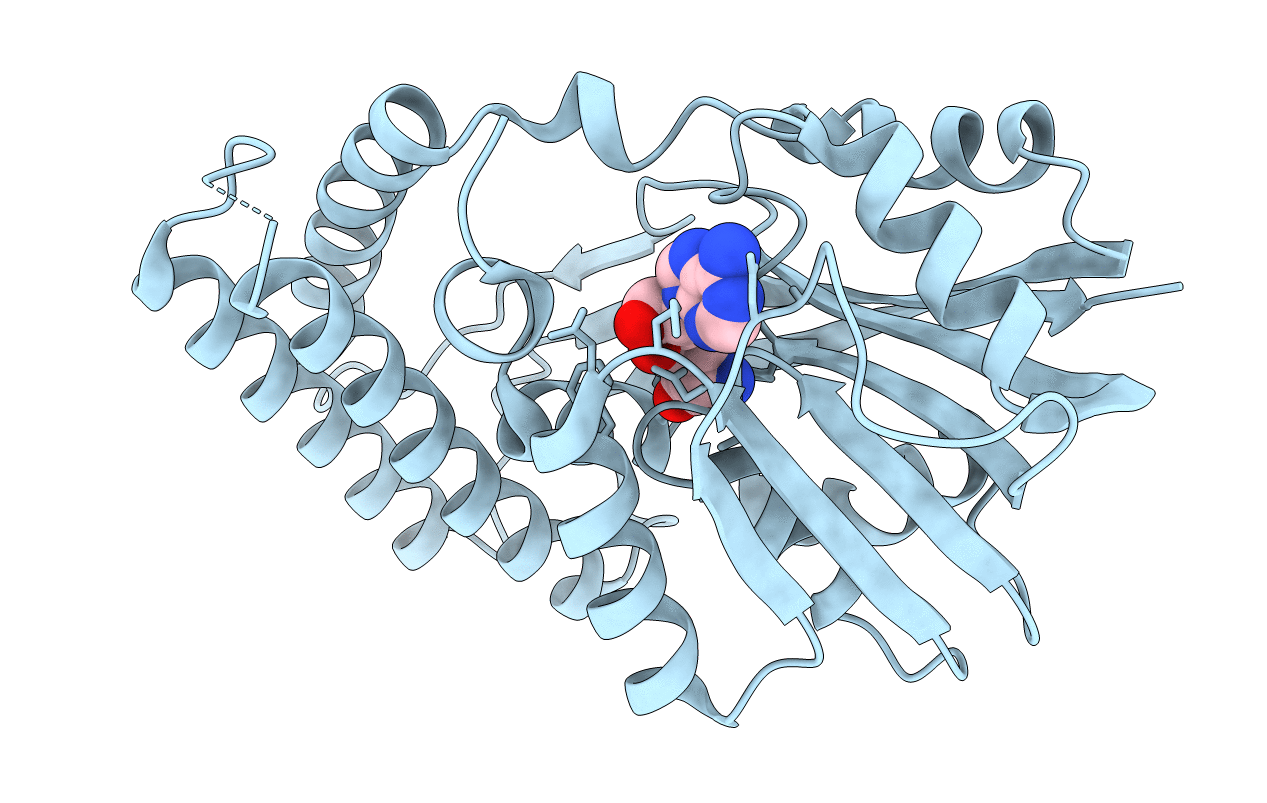
Deposition Date
2019-09-10
Release Date
2019-12-04
Last Version Date
2024-03-13
Entry Detail
PDB ID:
6UAK
Keywords:
Title:
LahSb - C-terminal methyltransferase involved in RiPP biosynthesis
Biological Source:
Source Organism:
Lachnospiraceae bacterium C6A11 (Taxon ID: 1410622)
Host Organism:
Method Details:
Experimental Method:
Resolution:
2.01 Å
R-Value Free:
0.27
R-Value Work:
0.23
R-Value Observed:
0.24
Space Group:
P 32 2 1


